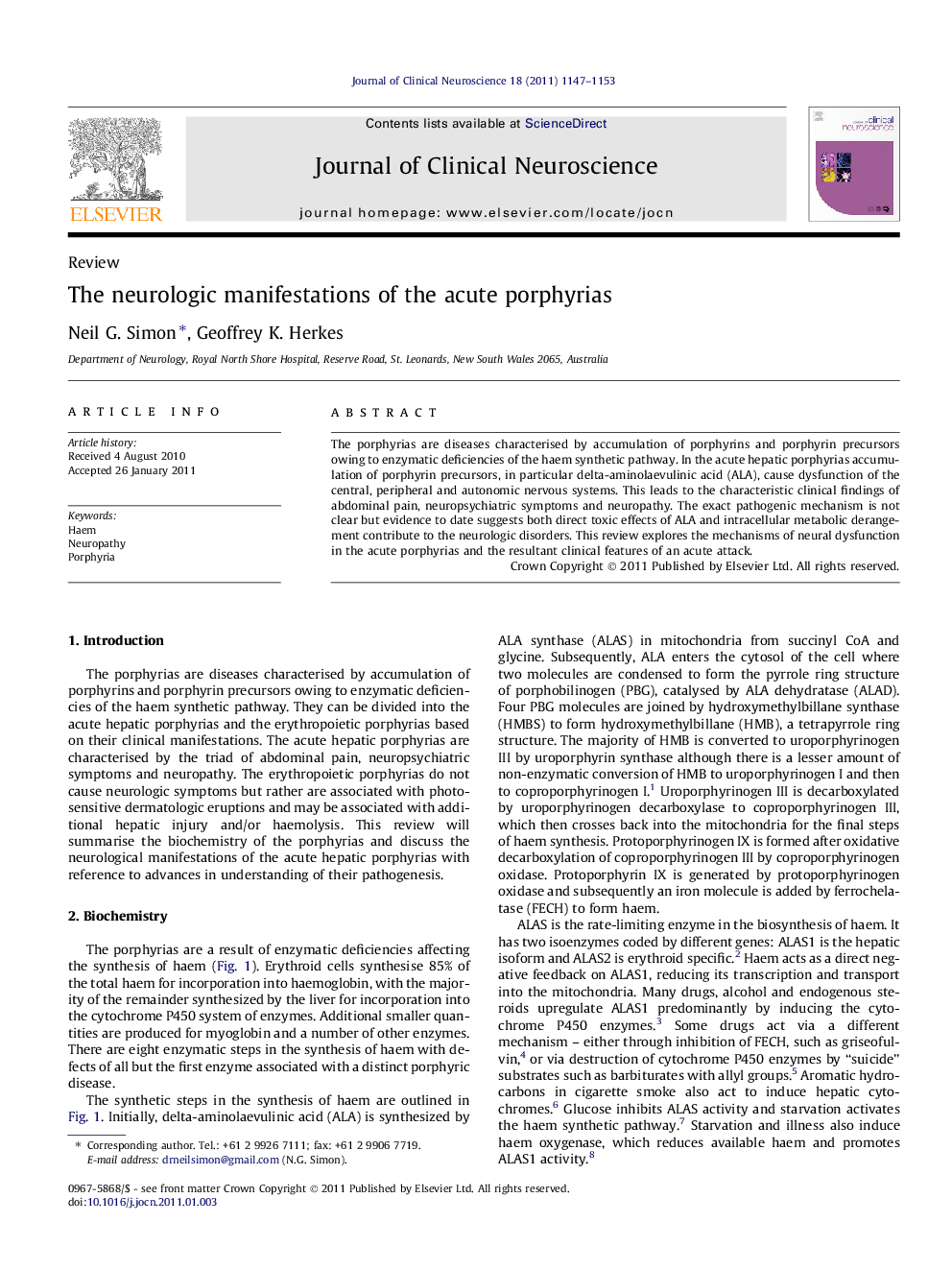| Article ID | Journal | Published Year | Pages | File Type |
|---|---|---|---|---|
| 3060783 | Journal of Clinical Neuroscience | 2011 | 7 Pages |
The porphyrias are diseases characterised by accumulation of porphyrins and porphyrin precursors owing to enzymatic deficiencies of the haem synthetic pathway. In the acute hepatic porphyrias accumulation of porphyrin precursors, in particular delta-aminolaevulinic acid (ALA), cause dysfunction of the central, peripheral and autonomic nervous systems. This leads to the characteristic clinical findings of abdominal pain, neuropsychiatric symptoms and neuropathy. The exact pathogenic mechanism is not clear but evidence to date suggests both direct toxic effects of ALA and intracellular metabolic derangement contribute to the neurologic disorders. This review explores the mechanisms of neural dysfunction in the acute porphyrias and the resultant clinical features of an acute attack.
